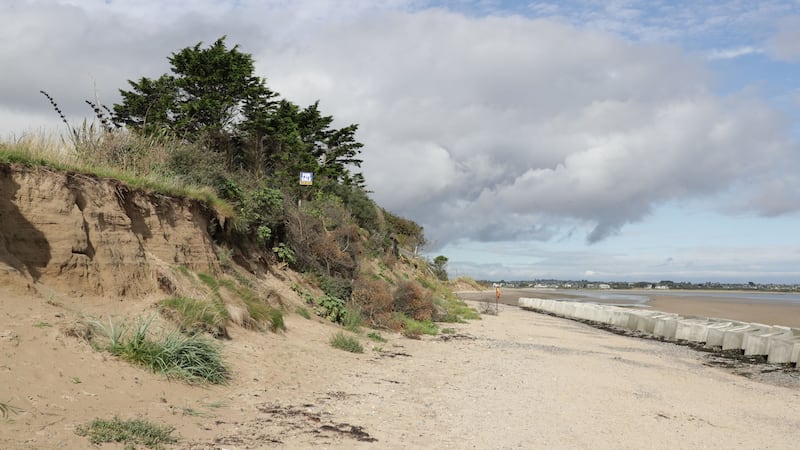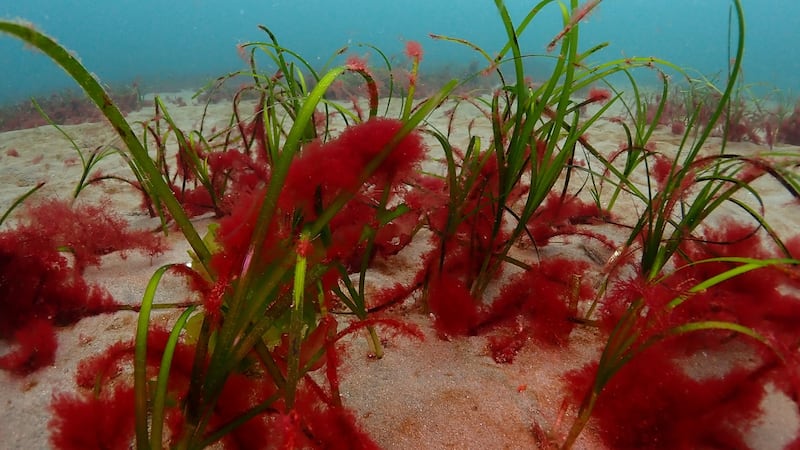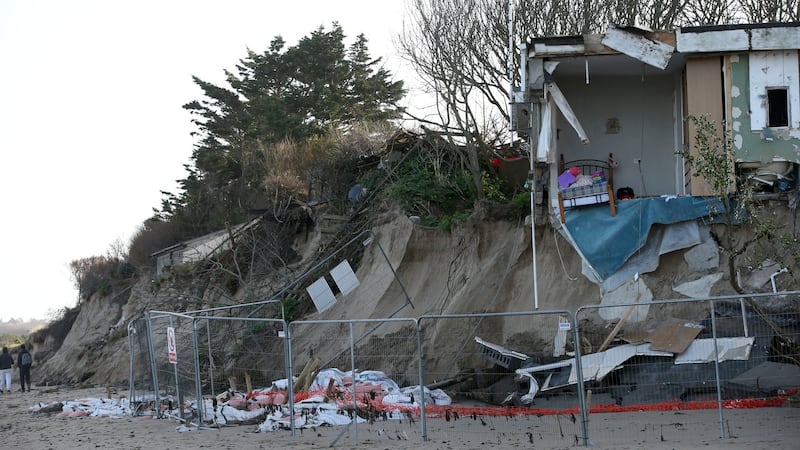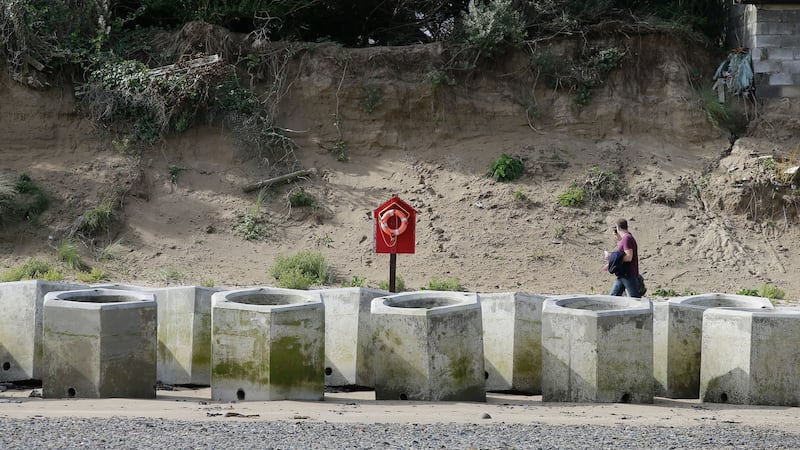Sandy beaches, wide open spaces and the constant drama of the ever-shifting coastal landscape has long drawn throngs to the world’s coastlines, both as holidaymakers and as permanent residents.
For generations of Irish people, holidays, whether at home or abroad, have been synonymous with the seaside. While sunshine isn’t always guaranteed, at least the sea and sand can be relied upon. However, recent reports paint an alarming picture of the future of our coastal regions.
According to a 2020 paper in Nature Climate Change, much of the world’s sandy coastline is already eroding, a situation it notes will be exacerbated by the impacts of climate change. “Ambient trends in shoreline dynamics, combined with coastal recession driven by sea level rise, could result in the near extinction of almost half of the world’s sandy beaches by the end of the century,” the authors warns.
Ireland possesses some of the world's finest beaches, dotted along 7,400km of serpentine coastline. Over the past decade or so, our rugged seaboard has been marketed as a unique tourist amenity, with Fáilte Ireland spending more than €110 million since 2014 in promoting the Wild Atlantic Way.
The campaign has been almost too successful, with areas such as Dingle, the Burren and the Cliffs of Moher experiencing bottlenecks and capacity issues down small country roads and laneways that can "negatively affect the visitor experience", according to an internal Fáilte Ireland document. The impacts on the local population and sensitive coastal ecosystems of the influx of large numbers of tourists can be equally problematic.
Since beaches are, by definition, at or only slightly above sea level, the relentless and accelerating global rise in sea levels is the clearest but by no means only threat. Given that coastal areas have been intensely settled by humans for centuries, "many have already lost their natural capacity to accommodate or recover from erosion, as the backshore is heavily occupied by human settlements", the study's lead author, Dr Michalis Vousdoukas, notes.

Some 20 per cent of the Irish coast is now at risk from coastal erosion, with 6 per cent regarded as being in immediate danger
The time scales for severe impacts are surprisingly short. Up to 15 per cent of the world’s sandy beaches face “severe erosion” by 2050, with this rising to 35-50 per cent by the end of the century. These estimates do not include the impact of occasional storm-driven shoreline retreat, of which “some events may leave a footprint that takes decades to recover, if at all”, Vousdoukas adds.
The increases in storminess projected as a result of global warming are already beginning to become evident in Ireland, with a host of major storms in recent years. These include storm Darwin (2014), Desmond (2015), Ophelia (2017), Eleanor (2018) and storm Elsa, which made landfall in December 2019.
The three months from December 2013 to February 2014 was the stormiest period in the 150 years of the instrumental record in both Ireland and northwestern Europe, as extensive tracts of coastline were impacted by a series of powerful storms.
These recent storms, according to Dr Eugene Farrell of the department of geography in NUIG, "were the most energetic in over a century of observations". He notes that some 20 per cent of the Irish coast is now at risk from coastal erosion, with 6 per cent regarded as being in "immediate danger".
However, only about 4 per cent of Ireland’s coastlines are protected to any degree by defences. It has to also be borne in mind that man-made coastal defences can actively interfere with the coastline’s ability to adapt and retreat.

“The case for building resilience in our coastal regions is urgent, given that changing ocean climates will produce even more extreme storm events in the northeast Atlantic,” Farrell says. These impacts are exacerbated by growing pressure from human activities, including the recent upsurge in coastal tourism.
He cites research undertaken by the Environmental Protection Agency (EPA) which used floods in Galway as a template and projected that a future extreme flooding event could cost Ireland about €1 billion in damage. It is estimated that there has been a tripling of weather-related insurance events since the 1980s, a pattern mirrored globally.
“Our coasts are being squeezed by pressure from the oceans – storms – and from the land, by people,” Farrell adds. Having worked abroad for a decade and a half, Farrell returned to Ireland in 2012 and was surprised to discover that at least eight separate government departments have some degree of jurisdiction, with no one overall agency in charge.
New research published by scientists at Maynooth University in the journal Ocean Science found sea levels in the Dublin Bay area are rising at twice the global rate. Between 1953 and 2016, sea level rose by almost 70mm, with the rate increasing in recent years.
The authors note that Dublin City Council has recently increased the coastal defences in Dublin, "allowing for 40-65cm of mean sea level rise". Depending on the overall trajectory of greenhouse gas emissions in the decades ahead, sea level in the Dublin Bay area is expected to rise by 0.3-0.6m by 2100. Globally, the Intergovernmental Panel on Climate Change (IPCC) is projecting average sea level rise this century in the range of 0.6-1.1m – depending on emissions.

Average coastline retreat of over 9m will occur, leading to a 56 per cent loss in permanent beach area
Apart from the grave ecological consequences of losing unique coastal habitats, this will also have profound impacts on areas heavily dependent on tourism. A study published last December in Frontiers in Marine Science of the Balearic Islands off the coast of Spain projects the permanent loss of up to 65 per cent of the archipelago's famous sandy beaches.
More than a quarter of the total income in these regions is derived from beach-based tourism. Researchers projected that under the conservative IPCC RCP4.5 scenario for global warming this century, average coastline retreat of over 9m will occur, leading to a 56 per cent loss in permanent beach area.
Under the “worst case” RCP8.5 scenario, nearly one in five beaches in the region would disappear completely, along with the loss of 65 per cent of the permanent beach area of the remaining coastline. Among the proposals to mitigate these impacts, the authors recommend preserving seagrasses which provide natural protection, along with encouraging the tourist industry to “rethink its economic model”.
Ireland’s east coast has been experiencing accelerated erosion in recent years, especially as a result of storms. Given the close proximity of the DART and intercity rail lines to the coast, erosion along the east coast is of particular concern to Iarnród Éireann. It published a strategic assessment report late last year that estimated the cost of protecting five vulnerable sections of coastal rail lines against erosion could be up to €225 million.
While high value infrastructure can be shielded at least in the medium term from rising sea levels and increasingly powerful storms, difficult decisions lie ahead as to which areas can and cannot be protected.
“We know that Ireland doesn’t have the money to defend the whole coastline and the reality is that the social fabric of rural communities – already tearing at the seams – will break down completely as areas are left to fend for themselves and are eventually abandoned for higher ground,” Farrell says.
He notes the OPW’s mid-range future planning scenario envisages sea level rise of about 0.5m by 2100 but he fears the real figure could be “two to three times this estimate, which means we urgently need to refine our sea level and storm surge models for the country”.

The coast remains the red-headed stepchild that no authority or department wants
The challenge for the scientific community, Farrell argues, is to convince government that so-called environmental goods and services “should not be taken for granted and are not free to use”.
While accepting it is problematic to put a strict monetary value on nature, he feels it is also necessary. Research undertaken in the UK on its coastal regions put their economic value at more than €55 billion. Farrell’s own rough estimate of equivalent values for Ireland would run to over €2.5 billion.
However, the lack of clear planning and co-ordination means, according to Farrell, that “the coast remains the issue that no authority or department wants”
John Gibbons is an environmental writer and commentator




